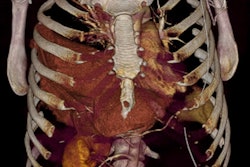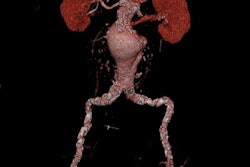
Focused abdominal sonography in trauma (FAST) exams are a reliable way to evaluate whether pelvic fracture patients presenting to the emergency department have abdominal bleeding and need laparotomy or further surgery, according to a study published online February 14 in the Journal of Trauma and Acute Care Surgery.
The findings contradict prior studies suggesting that the FAST exam is not an effective tool in this setting, wrote a team led by Dr. Nicole Townsend Christian from the University of Colorado Denver.
"[It's crucial to be] able to reliably determine the presence of [abdominal bleeding] ... in the unstable trauma patient with a pelvic fracture," the group wrote. "Initial triage and management decisions hinge on this determination. This study suggests that FAST exam is reliable in this high-risk group of patients to identify which patients need laparotomy."
Rapid assessment
Patients presenting to the emergency department after blunt trauma require rapid assessment to be treated appropriately, Christian and colleagues wrote. It's been demonstrated that trained surgeons can use FAST to reliably identify abdominal bleeding, but it continues to be debated whether the exam is reliable in patients with complex pelvic fractures, especially because the exam's sensitivity has been reported to be as low as 26%.
A new therapeutic intervention, Resuscitative Endovascular Balloon Occlusion of the Aorta (REBOA), is used in abdominal zone III (iliac arteries and veins) for unstable pelvic fractures; it involves placing a catheter into the femoral artery, guiding it into the aorta, and inflating a balloon at its tip to stop bleeding. But whether it can be used in zones I (midline of the abdomen) and II (renal vessels and kidneys) is unclear -- which is another way FAST could be useful.
Christian and colleagues sought to investigate whether the FAST exam is effective for identifying intra-abdominal hemorrhage as the result of serious pelvic fracture, as well as whether the FAST exam could be used to guide the REBOA technique in trauma patients.
The researchers included data from 81 patients in persistent shock who had a FAST exam and ensuing preperitoneal pelvic packing to staunch bleeding between January 2005 and July 2015. FAST exams were performed or supervised by trauma surgeons or ultrasound fellowship-trained emergency department physicians, and they included four views: right upper quadrant, left upper quadrant, pelvic, and pericardial.
At Denver Health Medical Center, the FAST exam is routinely repeated a second time during the trauma survey to identify whether more blood has accumulated, the group noted. Christian and colleagues defined a true-positive FAST exam as abdominal hemorrhage confirmed by CT or laparotomy and requiring surgical intervention.
During the study time frame, FAST exams were negative in 53 patients; of these, 52 did not require surgical intervention for abdominal bleeding, while one required a splenectomy. The exam was positive in 28 patients, and of these, 26 had findings confirmed by CT or laparotomy and two did not have intra-abdominal hemorrhage upon further evaluation.
FAST performance measures were as follows:
- Sensitivity: 96%
- Specificity: 96%
- Positive predictive value: 93%
- Negative predictive value: 98%
- False-negative rate: 2%
- False-positive rate: 7%
These measures bode well for FAST's efficacy -- especially the low false-negative rate, according to the researchers.
"The false-negative rate ... [suggests] that it is rare for there to be clinically significant hemoperitoneum in the unstable pelvic fracture patient with a negative FAST exam," they wrote.
Relevant lessons
The findings suggest a few lessons for dealing with pelvic fracture, Christian and colleagues noted:
- Repeat the FAST exam in these patients if the initial exam is negative to identify any further bleeding.
- In unstable patients with pelvic fractures and a negative FAST exam, the abdomen is not the source of significant blood loss.
- FAST can help determine how to use the REBOA technique: If the exam is negative, REBOA should be considered, but patients with positive FAST results may be better candidates for preperitoneal pelvic packing and laparotomy.
In any case, FAST offers another tool for the emergency department arsenal, the authors concluded.
"FAST reliably identifies clinically significant hemoperitoneum in life-threatening, pelvic fracture related hemorrhage," they wrote.




















